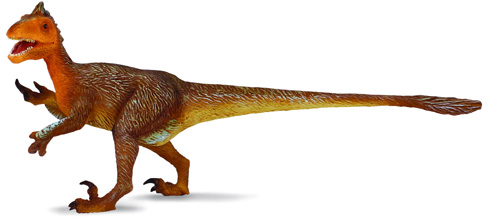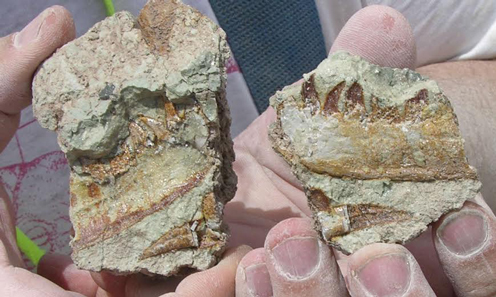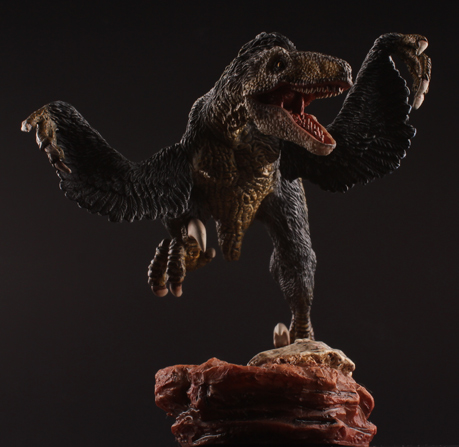New Utahraptor State Park Proposed
Fossils of the large dromaeosaurid Utahraptor (U. ostrummaysorum) were put on display as legislators and campaigners lobbied for the creation of a state park named after the iconic theropod dinosaur.

The picture (above) shows a model replica of Utahraptor from the CollectA Age of Dinosaurs range.
To view this range: CollectA Prehistoric Life Popular Models.
A New State Park for Grand County, Utah
A bill has been proposed that would create the Utahraptor State Park, if passed this would be the 45th such park designated within the “Beehive State”. The park would cover an area of Grand County in eastern Utah, close to the town of Moab and it would include the Dalton Wells Quarry where the first fossils of the giant raptor Utahraptor were discovered.
As well as providing camp sites and trails the park would protect and preserve the Dalton Wells Quarry site. Although the park’s current plans do not include provision for a museum, it has been suggested that if funding could be found, then a small museum documenting the extensive Lower Cretaceous strata that are exposed in this area and their contribution to palaeontology could be constructed.
It has been speculated that a 1:1 scale replica of the skeleton of a Utahraptor could be erected within the park’s boundary.

Utahraptor State Park Proposed
The proposals involve the conversion of approximately 6,500 acres (2,630 hectares), into a park. Responsibility for conservation would be undertaken by either Utah’s Division of Forestry, Fire and State Lands or the Utah School and Institutional Trust Lands Administration.

The picture (above) shows a Utahraptor figure from the Rebor range of replicas.
To view this range: Rebor Prehistoric Animal Models and Figures.
A spokesperson from Everything Dinosaur commented:
“We do appreciate how tight budgets are right now, but if the funding could be found to establish this new park and to protect the famous Dalton Wells location, that would be fabulous. So much of the world’s open spaces and important scientific sites are under threat it would be wonderful to see this exceptionally important fossil site protected.”

